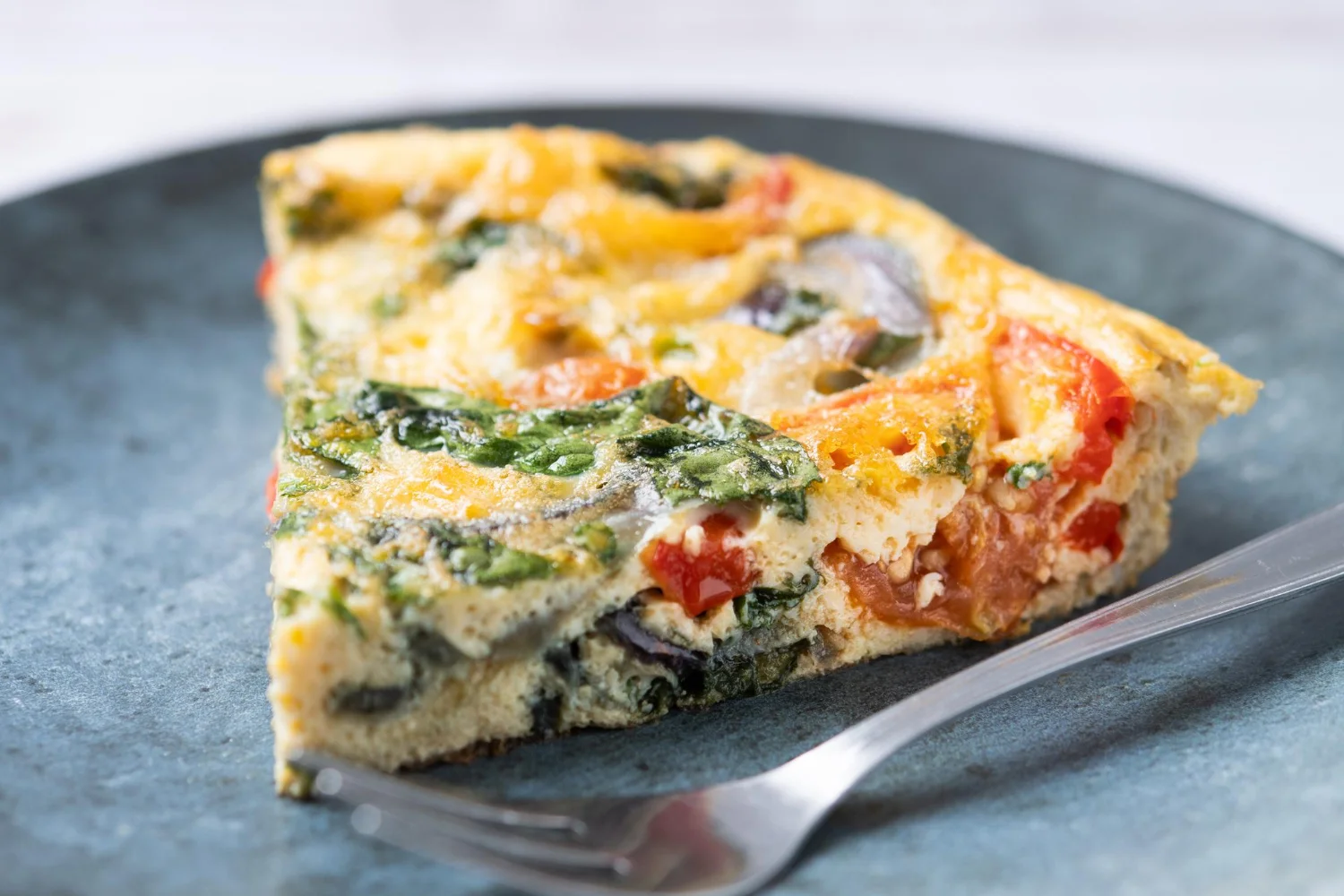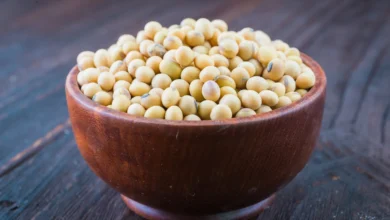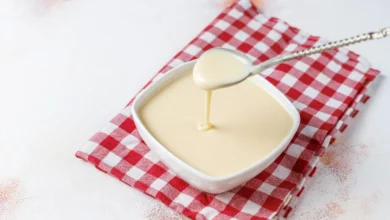Can You Freeze Frittata: Make Now, Eat for Weeks
Have you ever whipped up a delicious frittata, only to find yourself with more than you can handle? Fear not, leftover frittata doesn’t have to go to waste! Just a while back, I found myself in this exact situation. I’d made a monster frittata for a brunch with friends, but they ended up running a bit late. Thinking quickly, I decided to freeze the leftover portion – a decision that turned out to be a total win! To my surprise, the reheated slices the next day were just as flavorful and satisfying as the fresh version. That experience sparked a deep appreciation for the magic of freezing frittatas, and I knew I had to share this knowledge with the world!
So, whether you’re a meal-prepping master or simply love the versatility of a good frittata, this guide will equip you with all the tips and tricks to freeze and reheat your frittata creations flawlessly.
Contents
- Can You Freeze Frittata
- Optimal Method for Preserving Your Frittata
- Reheating Your Frozen Frittata
- My Go-To Frittata Ideas
- How Long Do Frittatas Last?
- How to Freeze a Frittata
- The Best Way to Freeze Frittatas
- An Alternative Method to Freeze Frittata:
- Ingredients and Materials
- Can Frittata Be Frozen and Reheated?
- How to Thaw/Defrost a Frittata
- How to Reheat a Frittata
- Serving Suggestions
- Tips for the Best Tasting Frittata
- Frittata Variations: A World of Flavor
- Beyond Breakfast: Frittata’s Versatility
- When to Reconsider Freezing Your Frittata
- Nutrition Facts (per serving)
- Frequently Asked Questions
Can You Freeze Frittata
The short answer is YES!
While a frittata keeps well in the fridge for 3-4 days, freezing opens up a whole new world of convenience! A frozen frittata will stay delicious for 3-4 months, depending on the ingredients. This means you can enjoy this tasty dish whenever the craving strikes!
Let’s dive into the best methods for freezing, thawing, and reheating your frittata, so it tastes as delicious as the day you made it!
Optimal Method for Preserving Your Frittata
Here’s how I like to ensure my frittata stays delicious even after a stint in the freezer:
- Cool Down: Before freezing, let your frittata fully cool. This prevents excess moisture, which can affect the texture.
- Portion Control: For grab-and-go ease, I often pre-slice my frittata before freezing. Individual servings thaw quicker and reheat better! If you like a more rustic feel, freezing the frittata whole is fine too.
- Wrap It Up: Tightly wrap each slice or the whole frittata in plastic wrap, followed by aluminum foil – double protection against freezer burn! If you’re eco-conscious, reusable freezer-safe containers work too.
- Label & Date: Don’t forget to label with the type of frittata and freeze date. Frozen frittata is good for a few months, but it’s easy to forget what’s in there with time.
READ: Can You Freeze Risotto
Reheating Your Frozen Frittata
While you can reheat frittata right from frozen, for the best texture, a quick thaw in the fridge overnight works wonders. Avoid the temptation to reheat it at very high temperatures or for too long. This can result in that less-than-ideal rubbery texture sometimes associated with reheated egg dishes.
My Go-To Frittata Ideas
- Classic Veggie: A simple vegetable frittata is always a crowd-pleaser. It’s perfect for using up leftover roasted veggies!
- Hearty Fix: A Potato Frittata packs some extra satisfying oomph for those hungry mornings! It’s mouthwatering whether eaten hot or cold.
- Make-Ahead Mini Wonders: For portion control and a quick breakfast fix, Mini Frittatas are the hero! Just bake them in a muffin tin and freeze individually.
How Long Do Frittatas Last?
In the fridge, a frittata will typically last for 3-4 days. After that, it can start to lose moisture and dry out. That’s where freezing comes in! A frozen frittata can last for 3-4 months in the freezer, depending on the ingredients used.
Here’s a table summarizing the shelf life of frittata:
| Storing Method | Shelf Life |
| Fridge | 3-4 days |
| Freezer | 3-4 months |
How to Freeze a Frittata
Frittatas are not only easy to make, but with just a little extra time spent on prep before baking, they become an incredibly efficient option for future meals. Freezing your frittata prevents waste and ensures you always have a yummy, homemade dish ready to go. Whether your frittata features leftover vegetables, classic ham and cheddar cheese, or other exciting ingredients, most varieties freeze beautifully. Let’s cover the steps to ensure your frittata stays delicious and protected from freezer burn even after a few months in storage.


The Best Way to Freeze Frittatas
- Cool Down: The key is to cool your frittata completely. This will prevent condensation and those pesky ice crystals from forming and spoiling the texture.
- Wrap for Protection: For optimal results when freezing, individual portions are the way to go. Carefully wrap each slice or piece in plastic wrap, followed by aluminum foil. This extra layer helps prevent freezer burn and keeps the frittata’s moisture locked in.
- Slice and Flash-Freeze: I like to slice my frittata before freezing. Place the slices on a baking sheet and pop them in the freezer to flash-freeze for an hour or so.
- Pack and Store: Once the slices are frozen, transfer them to an airtight, freezer-safe container. Don’t forget to label and date it – organization helps! Your frozen frittata will be good in the freezer for up to 4 months.
An Alternative Method to Freeze Frittata:
- Cool Completely: As always, allow your frittata to cool completely to room temperature before freezing.
- Container or Bag: If you don’t want to slice your frittata, you can freeze it whole in an airtight container or a freezer bag. Wrapping in plastic wrap adds extra protection for individual portions, especially useful for meal prep.
PRO TIP: Frittatas with vegetables like zucchini, green peppers, or tomatoes have a higher water content. These are prone to more crystallization in the freezer. If yours has lots of veggies, it’s best to aim for freezing it no longer than 3 months. Sausage, meat-based, or other frittatas with less water content generally hold up well for the full 4 months.
Ingredients and Materials
To freeze your frittata successfully, you’ll need just few simple things:
- Prepared frittata: Your delicious frittata, fully cooked and cooled.
- Aluminum foil or plastic wrap: For wrapping individual slices or the whole frittata.
- Freezer-safe container or resealable freezer bags: To store your frittata securely in the freezer.
- Label and marker: To clearly mark the type of frittata and the date it was frozen.
Storage Troubleshooting
What if my frittata is too dry after freezing?
Sometimes after freezing, a frittata can feel a bit dry when reheated. A tiny splash of milk or cream whisked into the eggs while reheating can revive its texture and add back some moisture.
Why does my frittata have ice crystals?
This usually indicates some moisture in the container or a gap in the wrapping. Double-wrapping (plastic wrap, then aluminum foil) or utilizing containers with a truly airtight seal can help prevent this.
READ: Can You Freeze Brownies
Can Frittata Be Frozen and Reheated?
Yes, absolutely! While freezing and reheating frittata might change the texture slightly, the flavors remain excellent. Here’s the key: proper thawing and gentle reheating make all the difference. For the best results, thaw frozen frittatas overnight in the fridge. You can also reheat them directly from frozen, but thawing beforehand helps preserve the ideal texture. Reheat slices or whole frittatas on a cookie sheet in a low oven or over low heat on the stovetop.
How to Thaw/Defrost a Frittata
Depending on your available time, there are a couple of ways to thaw a frittata:
- Fridge Method: For the best texture, set your frozen frittata in the fridge 24 hours before you’re ready to reheat it. This allows for gentle thawing and makes the cooking process easier.
- Microwave Method: If you’re short on time, you can place your frozen frittata in the microwave and reheat it on high for 1-2 minutes. Make sure to drain any excess liquid that may accumulate during thawing.
Important Note: While the microwave is quick, thawing in the fridge generally helps preserve the texture of the frittata better.
PRO TIP: Let your frittata thaw thoroughly! A minimum of 8 hours is recommended for a whole frittata, and at least 4 hours for individual portions, for the best results when reheating.
How to Reheat a Frittata
There are several methods for reheating frittata, each with pros and cons. The best option depends on your preference and time constraints, but the quickest option isn’t always the ideal one! The most important thing is ensuring the frittata is thoroughly heated to a proper temperature of 165 degrees F. This is crucial for any leftovers, as it eliminates bacteria that could make you or your family sick.
Here are some popular methods:
- Oven: This is ideal for a whole frittata or larger portions. Preheat your oven to around 350 °F (175 °C) and bake for 15-20 minutes, or until heated through.
- Stovetop: Great for individual slices. Use a skillet over low heat, covering to help with even heating.
- Microwave: The fastest option, but it can lead to a slightly rubbery texture. Reheat in short bursts and check frequently to avoid overcooking.
- Air Fryer: This can give a nice “crisp” to the frittata, especially if it was initially baked for a crusty texture.
PRO TIP: If reheating your frittata from frozen, allow it to fully thaw, including the center, before cooking. This ensures it cooks evenly throughout.
In a Skillet (Our Favorite Method)
For a touch of crispy goodness, the skillet is our favorite way to reheat a frittata. Here’s how:
- Thaw: If frozen, completely thaw your frittata in the refrigerator as outlined in the “How to Thaw/Defrost a Frittata” subsection. Unwrap any plastic wrap or foil.
- Heat the Skillet: Add a touch of olive oil or butter to a skillet and place it over medium heat.
- Reheat: Carefully place the frittata in the preheated pan. Reheat for 2-3 minutes, or until the bottom is golden brown and crispy.
- Flip and Repeat: Gently flip the frittata and reheat for another 2 minutes, or until it’s heated through. Use a food thermometer to ensure it has reached an internal temperature of 165°F for safety. Enjoy!
In the Oven/Toaster Oven (can be slow)
This method is best for reheating larger portions or a whole frittata. Here’s the process:
- Thaw: Follow the instructions in the “How to Thaw/Defrost a Frittata” subsection to fully thaw your frittata.
- Preheat: Preheat your oven or toaster oven to 350 °F (175 °C).
- Unwrap: Remove any plastic wrap or foil from the thawed frittata.
- Place in Pan: Place the frittata in an oven-safe pan or dish.
- Cook: Reheat for 10-15 minutes, or until heated through. You can cover the frittata loosely with foil if you prefer a softer texture.
- Optional: If you like a browned top, remove the foil in the last few minutes of cooking.
In the Microwave (quick & convenient)
The microwave is the go-to for speed! Here’s the method:
- Place on Plate: Place a frozen frittata slice or a thawed portion onto a microwave-safe plate.
- Reheat on High: Reheat on HIGH for roughly 2 minutes. Timings may vary, so check if it’s heated through.
- Prevent Dryness: To help prevent the frittata from getting too dry, cover it with a slightly damp paper towel while reheating.
- Rest and Enjoy: Allow the frittata to cool for about 30 seconds before enjoying.
Remember: Microwaves can lead to uneven heating or a slightly rubbery texture. For the tastiest frittata, thawing and reheating using one of the other methods is usually preferred.
PRO TIP: Not all microwaves have equal cooking strength, so adjust cooking time accordingly to prevent overcooking and dryness.
In the Air Fryer (quick & gives a nice golden brown exterior)
- Thaw: Thaw your frittata completely following the instructions in the “How to Thaw/Defrost a Frittata” subsection. Unwrap any plastic wrap or foil from the thawed frittata.
- Preheat: Preheat your air fryer to 300 degrees Fahrenheit (148 degrees C).
- Place in Basket: Place the frittata in the air fryer basket, ensuring there’s room between multiple pieces for even cooking.
- Heat: Reheat for 3-5 minutes, or until heated through. Check for an internal temperature of 165°F (74 °C) for safety. Enjoy your delicious reheated frittata!
Freezing and reheating frittatas is a smart way to have a big batch ready to go for a gourmet breakfast on even your busiest days. If you’re a fan of make-ahead egg dishes, consider exploring something like an Overnight Breakfast Egg Casserole for another delicious and versatile option.
Broiler (Less Common Method)
This is a less common method, but it can work well for crisping the top of a frittata (like getting that melted cheese perfection!). Here’s how:
- Thaw your frittata as usual.
- Preheat the broiler to high.
- Place the frittata on a broiler-safe pan.
- Broil it for 2-3 minutes, keeping a close eye to prevent burning. It’s done when heated through and the top is nicely browned.
Toaster (Small Portions)
If you just have a tiny slice of frittata, a toaster can be a surprising option. Be aware that this is best for very thin slices that fit well in the toaster slots.
- Thaw your frittata as usual.
- Set your toaster to a low setting to avoid burning the exterior.
- Toast until warmed through.
Serving Suggestions
While delicious on its own, a few simple ideas can transform your frittata into so much more! Here are some ways to enjoy it:
- Salad Superstar: Crumble leftover frittata over a bed of fresh greens. Toss with your favorite dressing for a hearty and satisfying lunch.
- Sandwich Upgrade: Layer sliced frittata between bread with a smear of pesto, a slice of tomato, and fresh greens for a gourmet sandwich experience.
- Wrap It Up: Turn your frittata into a flavorful wrap! Spread it on a tortilla, add your favorite toppings like avocado or salsa, and roll it up for a quick and satisfying meal.
- The Perfect Sidekick: Serve slices of frittata alongside roasted potatoes, hash browns, or a simple green salad for a balanced and delicious breakfast or brunch.
Tips for the Best Tasting Frittata
- Choose Your Cheese Wisely: For optimal flavor and a creamy texture, opt for cheeses that melt beautifully. Grated cheddar, mozzarella, fontina, gruyere, and even a sprinkle of Parmesan are delicious options. Soft cheeses like goat cheese or feta add tangy bursts of flavor.
- Conquer the Watery Frittata: Vegetables release water as they cook, which can ruin your frittata’s texture. Pre-cook vegetables with high water content (like zucchini, spinach, or mushrooms) before adding them to your egg mixture. Squeeze out excess moisture to keep your frittata firm and flavorful.
- Flavor Adventure: Get creative with your flavor combinations! Here are a few ideas to get you started:
- Classic Combo: Diced ham, cheddar cheese, and green onions.
- Mediterranean Flair: Crumbled feta, chopped spinach, olives, and fresh dill.
- Southwest Twist: Chorizo sausage, roasted peppers, Monterey Jack cheese, and a sprinkle of cilantro.
- Sweet & Savory: Caramelized onions, crumbled bacon, and a touch of Gruyere cheese.
- Ratio Matters: A good guideline is around 1/2 cup of fillings (cheese, veggies, etc.) per egg. Too many fillings can make a frittata difficult to cook through.
- Season Generously: Don’t forget salt and pepper! Season the egg mixture well for the most flavorful frittata. Fresh or dried herbs also add a wonderful flavor boost.
Frittata Variations: A World of Flavor
The beauty of frittata lies in its versatility! Here are a few inspiring ideas to get you started on your own flavor adventures:
- Classic Combinations:
- Ham & Cheese: Chopped ham, your favorite melty cheese (cheddar, mozzarella), and diced green onions. A timeless and satisfying option.
- Garden Delight: Roasted vegetables like broccoli, peppers, and onions, along with crumbled feta cheese and fresh herbs like dill or chives.
- Global Inspirations:
- Mexican Fiesta: Spicy chorizo sausage, diced peppers and onions, black beans, and a sprinkle of pepper jack cheese. Cilantro adds a fresh touch.
- Mediterranean Mosaic: Sun-dried tomatoes, crumbled feta cheese, kalamata olives, and chopped fresh spinach. A burst of Mediterranean flavors.
- More Ideas to Explore:
- Potato & Sausage: Diced cooked potato, crumbled sausage, caramelized onions, and cheddar cheese. A hearty and filling breakfast.
- Shrimp & Asparagus: Sautéed shrimp, asparagus spears, ricotta cheese, and a touch of lemon zest for a touch of brightness.
- Goat Cheese & Fig: Spread of goat cheese, sliced fresh figs, caramelized onions, and a drizzle of honey or whipped honey before baking. A touch of sweet and savory..
These are just a starting point! Feel free to experiment with different ingredients and flavor combinations to create your own signature frittata.
Beyond Breakfast: Frittata’s Versatility
Frittata isn’t just for those early mornings! Its delicious flavors and satisfying texture make it ideal for various meals and snacks. Here are a few more ideas beyond the basics:
- Lunchbox Hero: Pack wedges of frittata along with fresh veggies and dip or a piece of crusty bread for a balanced and filling midday meal.
- Dinner Delight: Pair slices of frittata with a side of roasted vegetables or a simple green salad for a light but satisfying evening meal.
- Frittata Tapas: Cut your frittata into small squares or wedges and serve alongside other small bites like olives, roasted peppers, and a good quality cheese for a fun and easy appetizer spread.
- Soup Topper: Instead of croutons, crumble bits of leftover frittata into your favorite bowl of soup for a protein boost and added texture.
Tip: Try warming your frittata slightly before using it in these ways, although it’s also perfectly delicious cold!
READ: Can You Freeze Ricotta Cheese
When to Reconsider Freezing Your Frittata
While freezing is a great way to preserve a frittata, there are times when enjoying it fresh is the way to go. Here’s why:
- Delicate Ingredients: Freezing and thawing can take a toll on certain ingredients, leading to undesirable changes:
- Creamy sauces: These often separate, turning grainy or watery instead of maintaining their smooth texture.
- Fresh herbs: Their delicate flavors and vibrant colors fade significantly during the freezing process.
- Soft, fresh cheeses: Cheeses like ricotta or cream cheese can become unpleasantly grainy or watery once thawed.
- Uncooked Fillings: If you freeze a frittata with raw vegetables or meats inside, they won’t cook properly when reheated from frozen, posing a food safety risk.
- Short-Term Enjoyment: A frittata keeps well in the fridge for 3-4 days. If you know you’ll eat it within that timeframe, there’s no need to freeze it, ensuring maximum freshness.
- Prior Freezing: Repeatedly freezing and thawing food compromises texture and potentially food safety. If your frittata contains fillings that were already frozen (like pre-cooked vegetables), it’s generally best not to freeze the whole dish a second time.
- Texture Matters: Even when done properly, defrosted frittata can have a slightly different texture than a freshly made one. Some people find the changes negligible, while others who are sensitive to texture may prefer sticking to fresh frittata.
The Best Experiment: If you’re unsure whether your particular frittata will freeze well, try freezing a small slice. Upon thawing and reheating, you’ll know if the results are still delicious for you!
READ: Can You Freeze Halloumi
Nutrition Facts (per serving)
| Nutrition Facts | Amount |
| Calories | 315 |
| Fat | 23g |
| Carbs | 5g |
Conclusion
Whether you’re a meal-prep pro or simply love the versatility of a delicious frittata, knowing how to freeze and reheat it perfectly is a valuable kitchen skill. We hope this guide here on Whisk and Nibble has provided all the tips you need to enjoy your frittata creations for weeks to come. Remember, from classic combinations to flavor adventures, a frittata is a blank canvas to satisfy your cravings with wholesome ingredients. So don’t be afraid to experiment and have fun in the kitchen!
What’s your dream frittata flavor combination? Share your ideas in the comments on Whisk and Nibble!
____________________________
Frequently Asked Questions
How long can you keep frittata in the fridge?
A cooked frittata will stay good in the fridge for 3-4 days. To maximize its shelf life, make sure to place the eggs in an airtight container or wrap them tightly in plastic wrap or foil. This helps prevent the frittata from drying out and ensures it stays fresh!
Can you make a frittata ahead of time and reheat it?
Yes! Frittata is perfect for making ahead of time, then reheating when you’re ready to eat. It can be served warm, room temperature, or even chilled.
How to reheat frittata in the oven or toaster oven?
- Start by thawing the frittata (if frozen).
- Unwrap the frittata and place it in an oven-safe pan.
- Preheat your oven/toaster oven to 350 degrees F (175 degrees C).
- Cook for 10-15 minutes, or until heated through. If your frittata already has a browned top, loosely cover it with foil to prevent overbrowning.
Does reheated frittata taste good?
Absolutely! While there might be a slight change in texture, a properly reheated frittata still tastes delicious. The key is following the best freezing, thawing, and reheating instructions for your chosen method.
Do frittata freeze well?
Yes! If you plan on having leftovers, freezing is a great way to preserve a cooked frittata. It will generally stay good for around three months in the freezer. If you’re making a frittata with the intention of freezing it, bake it slightly less than usual since it will cook more during reheating. However, it’s best not to freeze an uncooked frittata as raw eggs and fillings don’t handle the process well.
How to freeze and reheat frittata?
- To freeze, place pre-portioned frittata pieces on a cookie sheet in the freezer until frozen solid.
- Transfer frozen slices to an airtight container and store them in the freezer.
- When ready to eat, reheat frozen frittata slices directly on a cookie sheet in a 275 degrees F (135 degrees C) preheated oven for about 20 minutes.
How long can frittata last in the fridge?
Frittatas make fantastic leftovers and keep well in the fridge! Enjoy them throughout the week for breakfast, lunch, dinner, or even snacks. Slice your frittata, place the pieces in a single layer within an airtight container (separating slices with parchment paper if stacking), and they’ll stay good for 3-4 days when properly stored.





